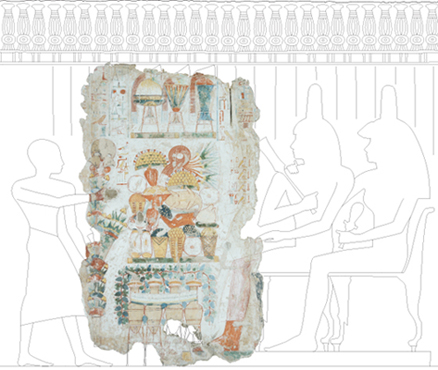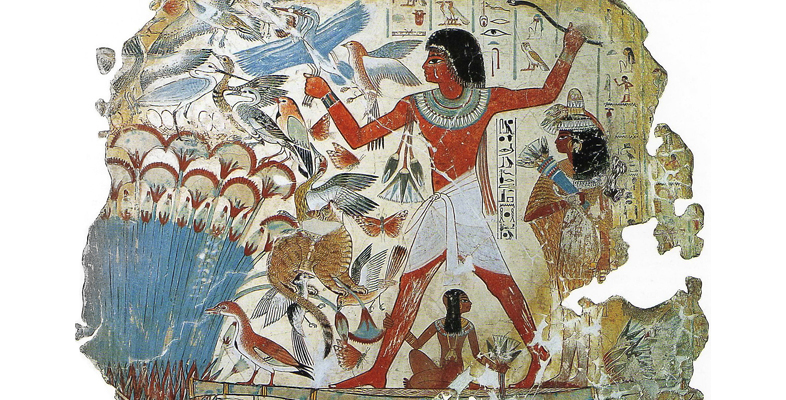1.2 Reconstruction
Now look at the conjectural reconstruction of the whole scene as it would originally have appeared in Nebamun’s tomb-chapel (Figure 5).

On the basis of this detailed look at the surviving fragment, and the conjectural reconstruction, what do you think might be the overall meaning of this wall painting?
What is happening in this fragment?
The reconstruction allows us to see that the figure at the left, whose right hand can now just about be made out as protruding into the surviving fragment, and whose left hand would have held the bunch of lotus flowers, is Nebamun’s son, Netjermes. The two larger seated figures at the right are Nebamun himself and his wife, Hatshepsut. It is Nebamun’s foot that protrudes into the lower right of the surviving fragment.
In conclusion then, we can say that the original decorative scheme would have shown Nebamun’s son, Netjermes, making offerings to his parents for their welfare in the after life; and they, according to the text, are ‘true of voice’ or ‘vindicated’, that is, their hearts have been weighed in the balance after death and found virtuous. Nebamun and his wife Hatshepsut are shown in a blessed state, seated in majesty in a booth, offerings laid before them, about to embark on a serene, happy and well-provided eternal life together.
